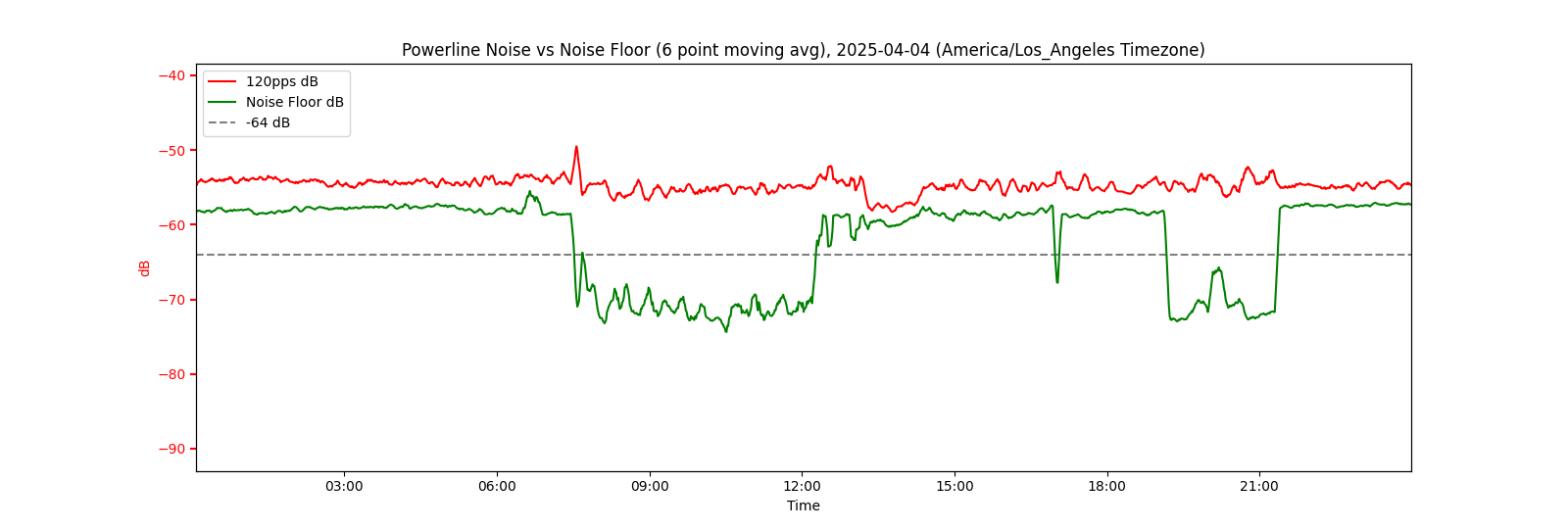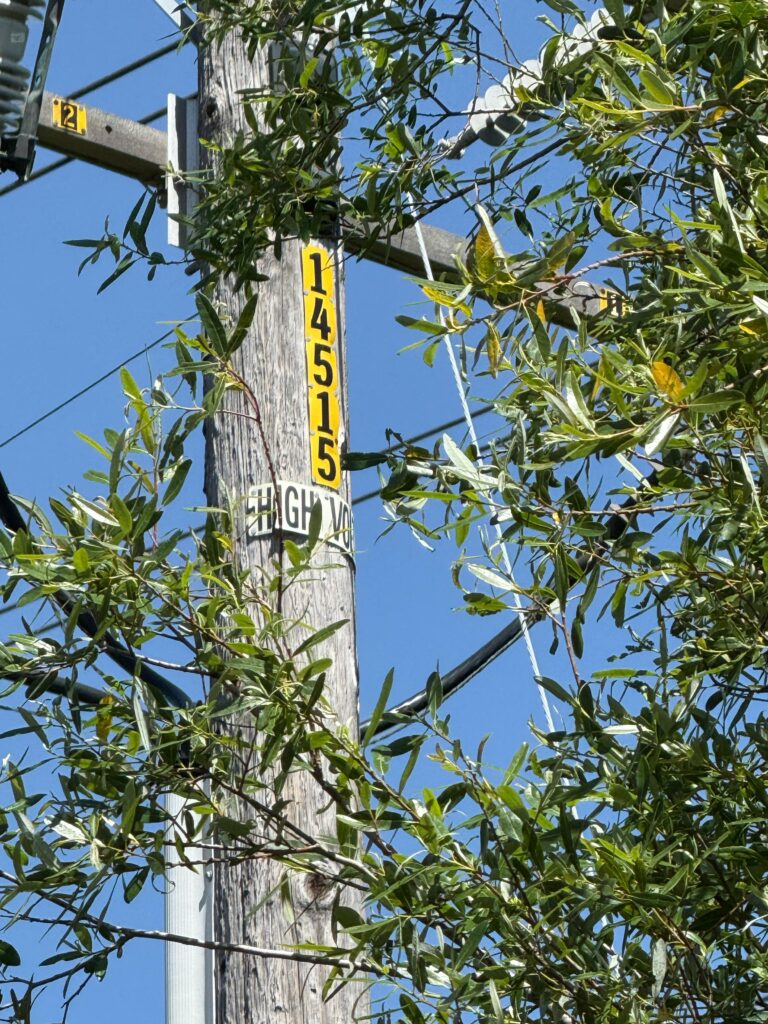Not only has PG&E failed to address the noise emanating from their substation, the overall problem has now gotten worse, as a new noise source has appeared.
I noticed in checking the charts yesterday that the noise floor has jumped from the typical -70dB (or so) on 80 meters to a much higher level which precisely tracks the noise source that I had previously tracked to the Poplar substation:

My means of calculating the noise floor is admittedly a little naïve: I use the same algorithm I use to findthe noise peaks but look for the worst-fit level rather than the best-fit of the pulse noise. This generally works very well when there’s a single noise source, or multiple noise sources which are in-phase. But as we know, power utilities handle electricity in multiple phases, commonly three of them at utility scale, spaced 120 degrees apart. In the time domain, at 8000 samples per second, that puts the peaks about 1333 samples apart (because there are two peaks per cycle), and depending on how badly a particular piece of equipment is arcing, each peak can in turn last for hundreds of samples. With enough noise generation, the entire time domain can be saturated with noise, which is what appears to be happening now.
I have, of course, already tracked down the source of the noise. It’s a pole about 530 feet from my house. It may have a small vegetation problem:

My usual method of noise hunting worked nicely here. I got my 220 MHz, 3-element Yagi and my handheld radio in AM mode tuned to match the Yagi, started at my house, and aimed for the direction the signal seemed to be coming from. Then I walked a short distance away and aimed again. It seemed to be coming from behind a row of houses. So I took a walk, stopping every so-often to take another reading. This led me to a nearby park. I then kept going to the other side of the park to make sure the signal now appeared to be moving “backward” (ie, that I had walked past its location) and it did. From here I could see the probable source: a lone utility pole in a marshy area between the park and the rear of a row of houses. I then got as close as I could to the pole, which was making a pretty obvious racket, but confirmed it anyway by rotating the Yagi 45° to put the null in the cardioid pattern in line with the probable source to see that the noise dropped off. It did.
I have of course reported this new noise source to PG&E with the pole number and coordinates and a note that there appears to be a good bit of vegetation growing up around the pole (despite the photo, though, as best I could tell there wasn’t any tree parts actually touching the high-voltage sections of the pole; however it is behind a fence in a protected wetland area, so I was unable to confirm this for certain).
Perhaps they’ll ignore this arcing pole for less than a year before they do something about it?